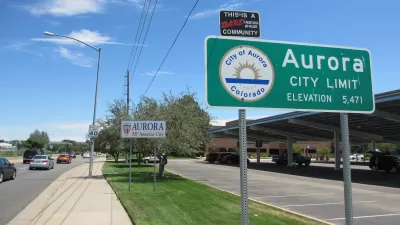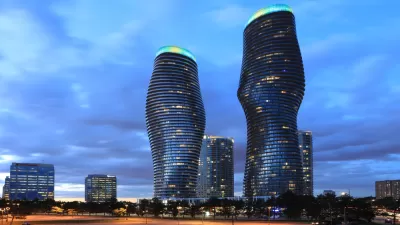As our suburbs diversify, the most affordable commercial districts found in such areas (often in strip malls) become an important entry point for immigrants to build their 'American Dream'. Kaid Benfield asks if such opportunities deserve protection.
"There is little question that suburban strip malls represent an unsustainable architecture," writes Benfield. "Totally automobile-dependent, marked by large surface parking lots, and remarkably inefficient at using land, strip malls generate much more pollution and consume much more in the way of resources on a per capita basis than do more walkable, urban shopping districts. Such urbanist thinkers as Galina Tachieva (Sprawl Repair Manual), June Williamson and Ellen Dunham-Jones (Retrofitting Suburbia) are absolutely correct in urging that, as these malls age and decline, they should be replaced with better, greener forms."
"And yet: As these properties have declined, so have their rents, making them affordable to small, often entrepreneurial businesses. Particularly as immigrants have settled in inner suburbs (where many of these fading commercial strips are), businesses owned and patronized by the immigrant population have occupied many of these spaces, in some cases alongside small start-ups owned by longtime community residents as well."
Planners have recognized the adverse impacts of redevelopment on affordable housing and responded with inclusionary zoning laws to help prevent displacement. "But, as far as I know," adds Benfield, "there is no comparable, widely understood ethic to protect small, often minority businesses that are harmed by otherwise beneficial neighborhood change, and I am wondering whether there should be."
FULL STORY: As we remake suburbs, should we guard against "commercial gentrification"?

Trump Administration Could Effectively End Housing Voucher Program
Federal officials are eyeing major cuts to the Section 8 program that helps millions of low-income households pay rent.

Planetizen Federal Action Tracker
A weekly monitor of how Trump’s orders and actions are impacting planners and planning in America.

Ken Jennings Launches Transit Web Series
The Jeopardy champ wants you to ride public transit.

California Invests Additional $5M in Electric School Buses
The state wants to electrify all of its school bus fleets by 2035.

Austin Launches $2M Homelessness Prevention Fund
A new grant program from the city’s Homeless Strategy Office will fund rental assistance and supportive services.

Alabama School Forestry Initiative Brings Trees to Schoolyards
Trees can improve physical and mental health for students and commnity members.
Urban Design for Planners 1: Software Tools
This six-course series explores essential urban design concepts using open source software and equips planners with the tools they need to participate fully in the urban design process.
Planning for Universal Design
Learn the tools for implementing Universal Design in planning regulations.
Ada County Highway District
Clanton & Associates, Inc.
Jessamine County Fiscal Court
Institute for Housing and Urban Development Studies (IHS)
City of Grandview
Harvard GSD Executive Education
Toledo-Lucas County Plan Commissions
Salt Lake City
NYU Wagner Graduate School of Public Service




























